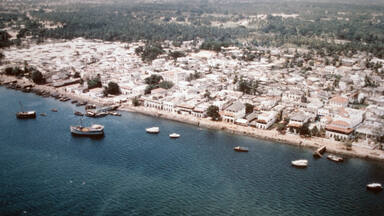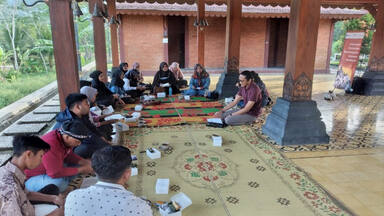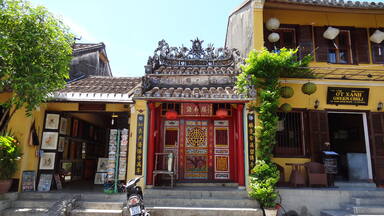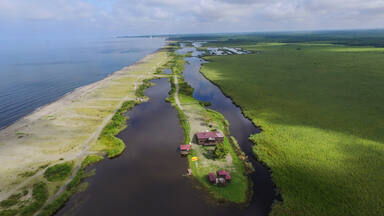The picturesque Old Bridge Area of the Old City of Mostar was the first World Heritage site in Bosnia and Herzegovina to be added to the World Heritage List in 2005 and has long been a major drawcard for local and international visitors.
While tourism helps to support jobs and livelihoods in this rural part of the country, prior to the pandemic its rapid growth was placing a significant strain on the town’s infrastructure – and a proportion of visitors came for one day only, putting maximum pressure on the World Heritage site, with limited benefit to the local economy.
A key aim of this programme has been to encourage visitors to stay longer in the region by making it easier to explore the region’s many other heritage attractions. This has been done by creating a heritage pass (which can be purchased for a flat fee of around €10), and supporting this with appealing itineraries for visitors to follow. Some of these cultural attractions and museums can be found within close proximity to Mostar, while others provide appealing stops on the way to and from major cities such as Split and Dubrovnik in neighbouring Croatia.
Thanks to funding provided under this programme, the municipality of Mostar has been able to develop and implement a visitor tax, to be collected from all vehicles with more than six passengers. The ‘vignette’ system works by companies or drivers paying a fee online that is linked to their vehicle registration number, and declaring how many passengers are arriving in the city. Passenger buses entering Mostar must pay the fee, and non-compliance can be traced through road cameras, including at the country’s borders. It is estimated that the system could initially attract an additional €2.5 million for the municipality’s funds.
Old Bridge Area of the Old City of Mostar, Bosnia-Herzegovina © Limes.Media/Tim Schnarr
In addition, the project provided support for the establishment of a Heritage Pass, enhancing the integral tourism offer, but also opening opportunities for generating additional revenues estimated at €6 million. Revenues collected through this taxation system will be used by the municipality to improve visitor infrastructure and fund other local projects that support sustainable, responsible visits by the city’s estimated annual 1.5 million visitors.
Fortunately, this system also allows the municipality to gain a more accurate picture on visitor numbers throughout the year, since the programme has enabled five employees to be hired and trained on gathering tourism data, which will be processed through the municipality’s tourism management office.
While a significant number of the city’s artisan entrepreneurs and hospitality workers had been put out of work due to the COVID-19 pandemic, this programme – together with match funding from the municipality - has enabled 88 individuals through a Cash for Work scheme to upgrade their skills and knowledge of customer service and responsible tourism practices. These individuals have been employed in the final quarter of 2022, and shall be employed through all of 2023 too, thus increasing their chances of being able to transition to longer-term positions once the programme funding has ended.
Local implementation partner: The City of Mostar
"The establishment of the vignette and Heritage pass will support the City of Mostar’s administration to more adequately manage its cultural and natural resources in a sustainable manner, especially the “Old Bridge Area of the Old City of Mostar” World Heritage property. It will help us to enhance visitors and tourist’s enjoyment of Mostar and more importantly will support the overall wellbeing of our citizens. For the first time since the inscription of Mostar to UNESCO’s World Heritage List, the City of Mostar and its citizens will start benefiting from this prestigious status.“
About the Old Bridge Area, City of Mostar
The historic town of Mostar, spanning a deep valley of the Neretva River, developed in the 15th and 16th centuries as an Ottoman frontier town and during the Austro-Hungarian period in the 19th and 20th centuries. The town has long been known for its old Turkish houses and Old Bridge, Stari Most, after which it is named. In the 1990s conflict, however, most of the historic town and the Old Bridge, designed by the renowned architect Sinan, was destroyed. The Old Bridge was recently rebuilt and many of the edifices in the Old Town have been restored or rebuilt with the contribution of an international scientific committee established by UNESCO.
Project background
The ‘Promoting sustainable tourism and private sector engagement for inclusive community development in response to the COVID-19 crisis’ project was developed by UNESCO thanks to support provided by the German Federal Ministry for Economic Cooperation and Development (BMZ) and the Deutsche Gesellschaft für Internationale Zusammenarbeit (GIZ). The project aimed to address some of the immediate socio-economic impacts of COVID-19 on tourism and heritage and was implemented across seven countries and ten World Heritage communities.
Discover more
Discover more about what this programme is delivering on the ground, as well as personal stories from those who have been involved






